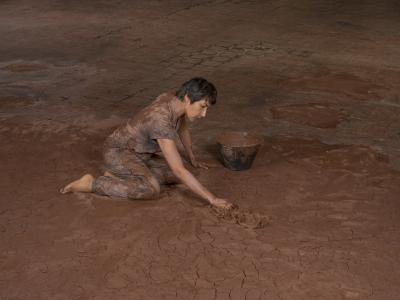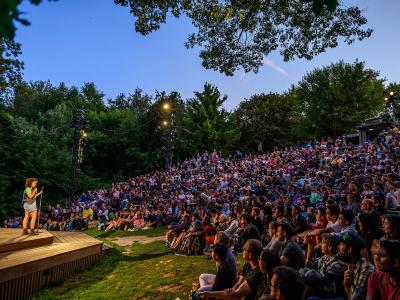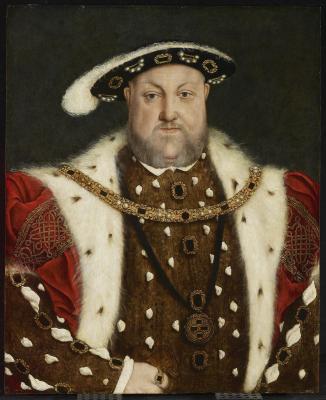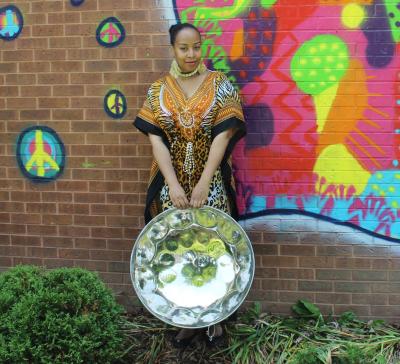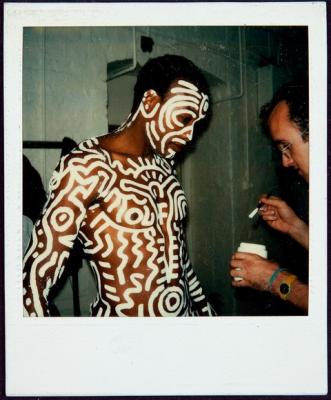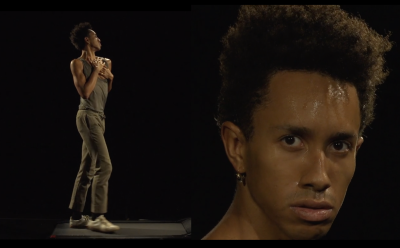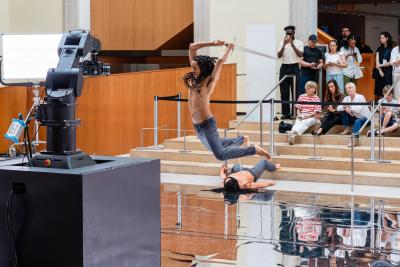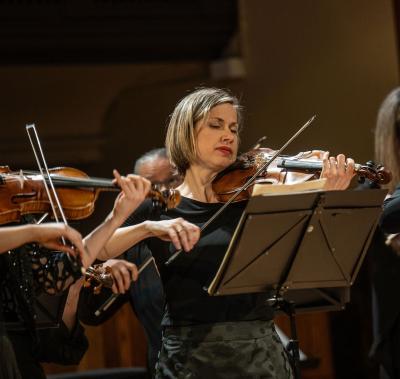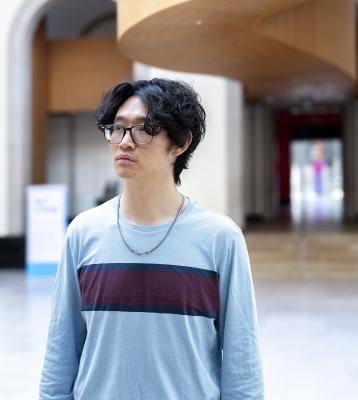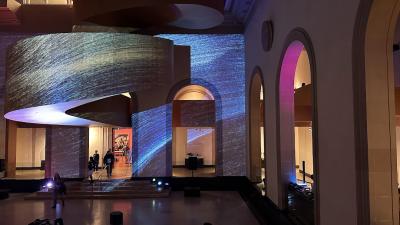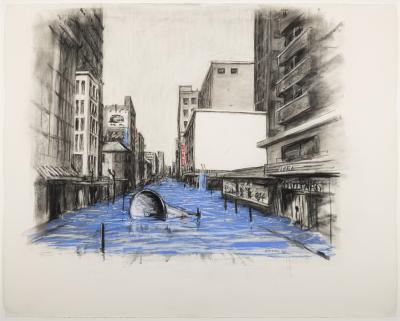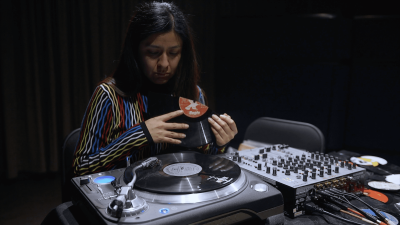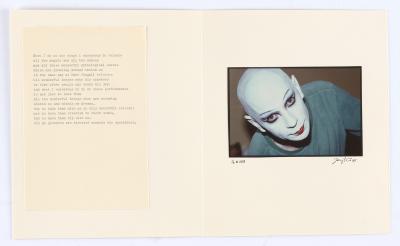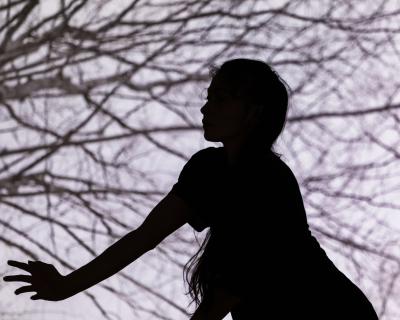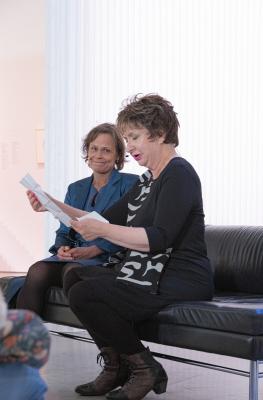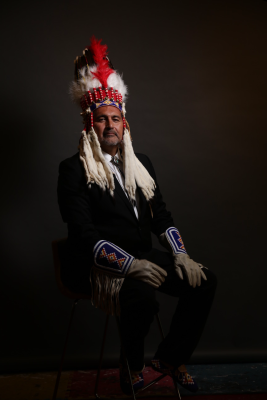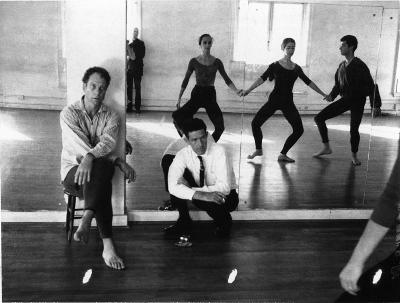Miles Greenberg in Toronto
The acclaimed artist readies for his Canadian performance debut on June 5
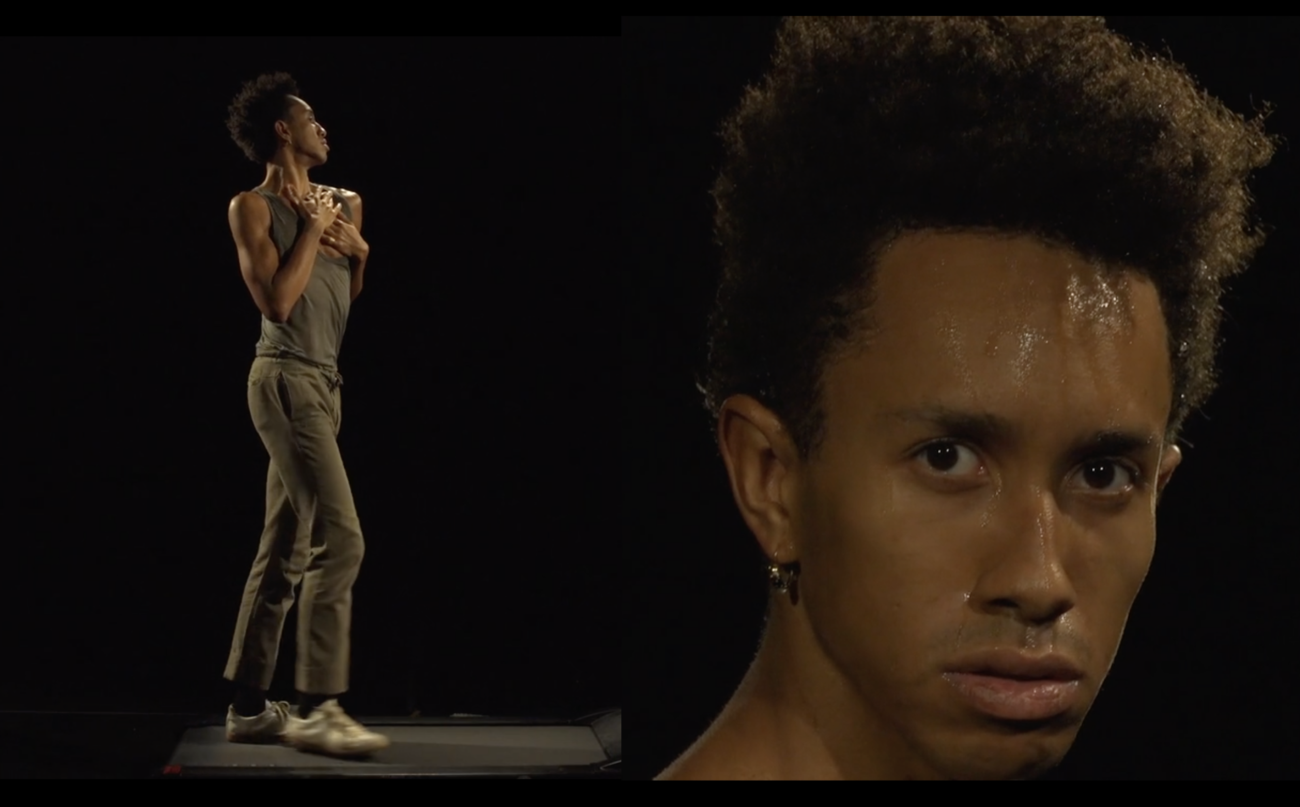
Miles Greenberg, Oysterknife, 2020. Presented online through the Marina Abramović Institute and shot at Centre Phi, Montreal, Canada. Courtesy of the Artist.
When Miles Greenberg takes over Walker Court on Wednesday, June 5, it will mark two exciting firsts for the Montreal-born, New York-based artist and sculptor. Not only is RESPAWN his first large-scale performance on home soil, it’s the first time he has introduced text into his work through a collaboration with fellow Canadian artist Jordan Tannahill.
Internationally renowned for his visually stunning, large-scale, site-specific environments activated through durational performance, Greenberg is no stranger to Toronto. It was here in 2021, that he debuted his first large-scale sculptures at Arsenal Contemporary Art Gallery. The sculptural translation of his Paris performance piece Late October (2020), these luminous deep indigo forms— now held in collections internationally— reflect his body frozen in time, distorted and rebirthed via an augmented 3D scanning method.
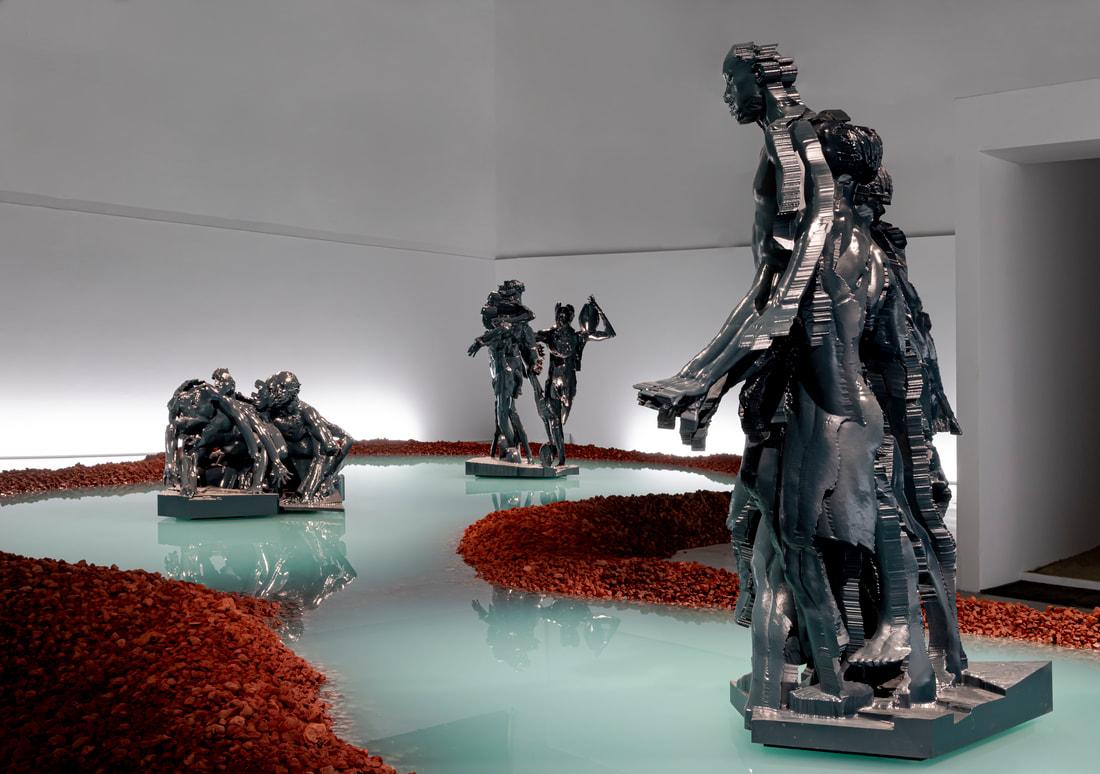
Miles Greenberg, Icarus, Narcissus, and Orpheus, 2021. Arsenal Contemporary, Toronto, Canada. Courtesy of the artist and Arsenal Contemporary. Photo by Toni Hafkenscheid.
These sculptures, an early foray into an artform he continues to explore, belie an artist concerned not with the ephemeral but with the physical body as a form in space, its preservation and decay over time. For his presentation at the AGO as part of Luminato Festival Toronto, Greenberg will transform Walker Court, designing it to recall the otherworldly, polygonal landscapes found in digital realms. In first-person fighting video games, to “respawn” is a mode in which a character dies and comes back to life to continue their journey. Greenberg will explore the concept of respawning through multiple lenses: as a mode of transformation, and to reclaim one’s origins and reanimate them.
In the lead-up to his performance at the AGO, co-presented and co-commissioned by Luminato Festival Toronto, Foyer spoke with Miles in his studio in New York.
What is important, says Greenberg, when considering how audiences engage with his work, is understanding that the work is not just about his own body. “It's just as much about the audience's body as mine, and their experience. I’m not here to dictate what an audience should take from something – to do so, might actually kill the magic for somebody. In classical sculpture, you don't necessarily know who the model was. But what resonates, what is recognizable, and what survives thousands of years, is the form.”
No stranger to great spaces, having performed in many of the world's great museums, from the Louvre to Venice’s Palazzo Malipiero, Greenberg believes that museums should condition visitors physically for art. “As a cathedral directs your eyes upward to the divine, so should a museum frame the land and the art it's on. I really like working in courtyards and atriums because they are spaces of transit, a naturally occurring crossroads that doesn’t block an audience but empowers them to stay 30 seconds, three minutes, or three hours. For however long an audience member and the people around them might remain, I want them to feel free to use it as a sort of space of communion and transit at the same time. The architecture in which I perform is important to me because it, the audience, and lighting are the provenance of the performance. Capturing that on video makes that provenance visible.”
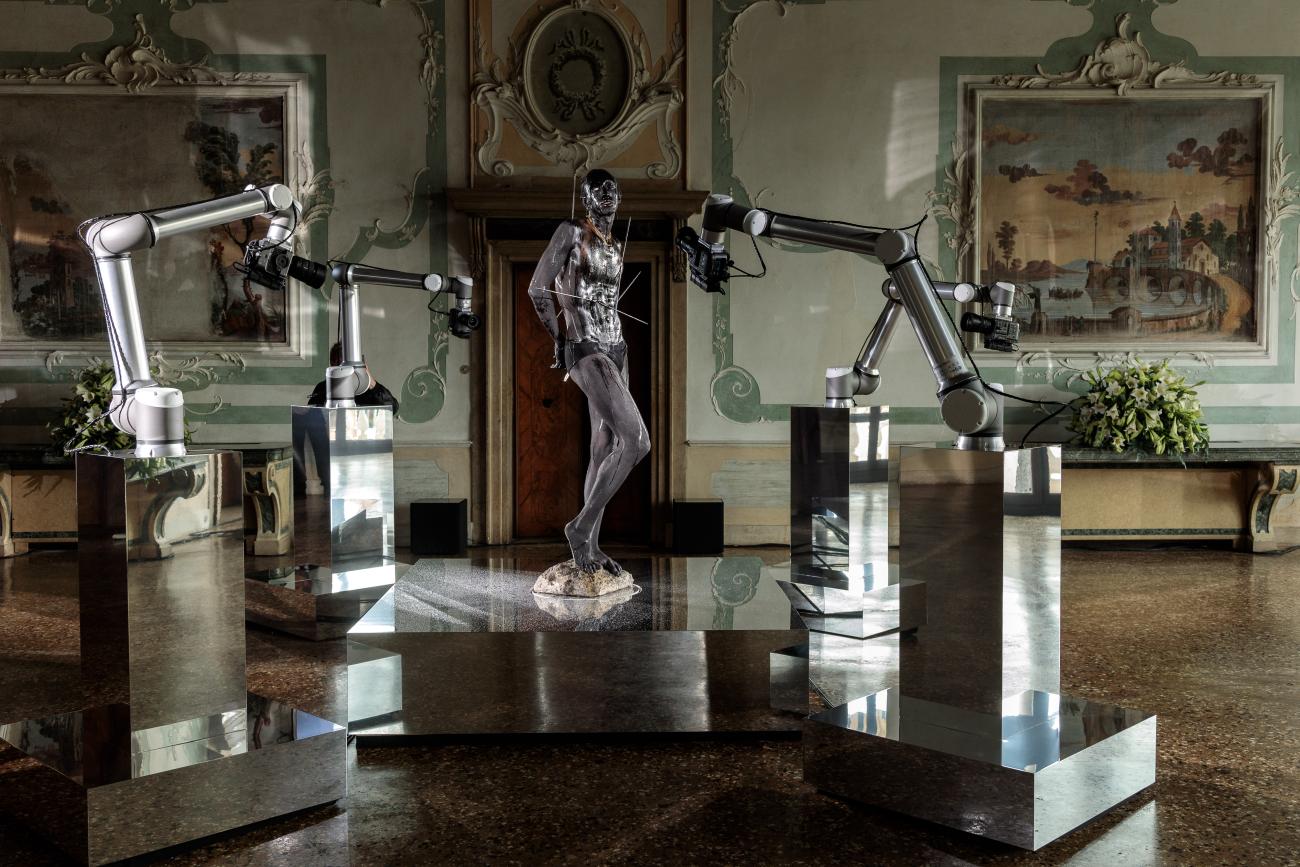
Miles Greenberg, Sebastian, 2024. Palazzo Malipiero, Venice, Italy. Courtesy of the artist, Museum Berggruen and Neue Nationalgalerie. Photo by Francesco Allegretto
Greenberg is honest about the physical and mental toll his work takes. “Marina Abramović calls it ‘body drama’ and it’s very real. You are just given so much direct energy from the audience – one understands how rock stars crumble. The impact of so many people staring at you and cheering for you - it's like emotional electricity and your body is what absorbs it. It is not an ego thing - it is a very, very tangible force.”
Which may, in part, account for his interest in creating more durable art objects. While the site specificity of his ambitious works might suggest they are un-repeatable, Greenberg is interested in how a work might live on in a different form. “I have been working extremely hard over the last nine years to make something that leaves a trace. My interests – unlike some artists – are not in ephemerality, but in forms of artmaking, preservation, history, and decay. I do not feel that work like mine needs to disappear. Video documentation is an art practice unto itself and through both sculpture and video, I’m making new objects that are time-proof.”
The decision to include text elements in RESPAWN, is a tribute to Jordan Tannahill’s “very very lucid understanding of my rhythm as an artist.” Close friends, it is Tannahill’s work that Greenberg listens to in his studio, making him a natural collaborator. “I’ve hesitated to use text for so long. I think it is part of my aversion to theatre - which is funny because Jordan is also a playwright, in large part because it never felt intuitive. This time it does.”
While Greenberg considers the very real weight of the body in both his performance work and sculpture, in his creative process the intangible and the intuitive share pride of place. “[My works] just start with a feeling and a daydream, and wondering what the shape of a certain feeling or a certain thing is. Should it take root, then it's finding a way of creating a functional conduit for that feeling, so I can amplify it, access it, and understand it better. I think of them as petri dishes - you put a little fragment of something into fertile ground, and my job is to build that fertile ground in a way that feels like it represents the feeling that I’m after...”
Miles Greenberg RESPAWN is co-commissioned and co-presented by the Art Gallery of Ontario and Luminato Festival Toronto and curated by Bojana Stancic, the AGO's Program Curator, Performance and Live. For more details about the performance, visit ago.ca/events/miles-greenberg-respawn.
Don't miss Miles Greenberg in conversation on June 7 at 4 p.m. with AGO's Program Curator, Performance and Live, Bojana Stancic. Tickets for this talk are free. For more information, visit ago.ca/events/miles-greenberg-conversation






